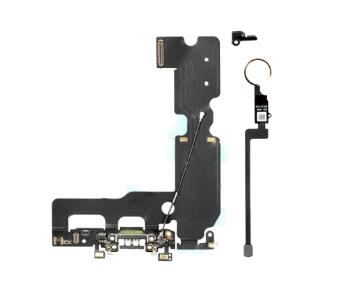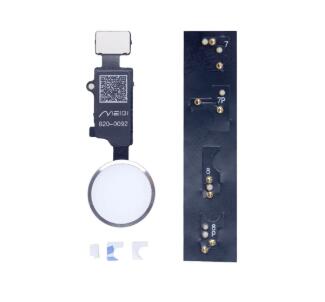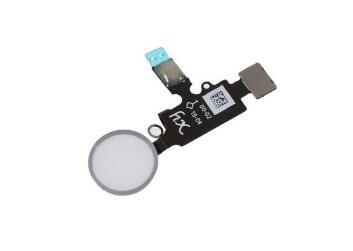Please note: We do not mention the features of the different versions of home buttons since they vary between suppliers.
Over the past six months, we’ve seen an increase in HX, JC, and YF* universal home button replacements entering into the phone repair market. Most of the original designs we’ve seen were created by JC, and many alternate designs were made by various other manufacturers such as HX, YF, and more. Since there are different suppliers of these parts, this means there are different versions on the market. We believe understanding the functionality of these home buttons will help you make a better purchasing decision.
Mobile Defenders’ Universal Home Button Offerings
The Functionality of the Original Part
On the iPhone 7, 7+, 8, and 8+, the home button is connected to the 3D touch sensor flex cable. On the original home button, there are two different types of sensors: the Touch ID sensor and a capacitive sensor (pressure sensor). The Touch ID sensor looks for a user’s fingerprint, whereas the capacitive sensor searches for the amount of pressure placed on the home button.
In terms of aftermarket home buttons, no one has yet created a part that has the accurate functionality of Touch ID AND the capacitive sensor. Some suppliers have started incorporating capacitive sensors into their parts but they’re missing the other piece of the puzzle: Touch ID.
The First Generation of Replacements on the Market
The first generation of these home button replacements that we saw on the market included a complete replacement of the charge port. This part included a small flex cable that you had to wire into the home button itself, either by way of soldering or with a plug-in connector.
This part was difficult to use because it required replacement of the charge port flex (which requires removal of the board). This leaves room for error and increases the risk of potentially damaging the components or ruining the device altogether.
The Second Generation of Replacements on the Market
The second wave of home buttons that we saw on the market required Bluetooth to function. When the home button is installed, the device is recognized as a Bluetooth keyboard. The first design of these Bluetooth devices uses a small piece of flex cable that is installed onto the main board. The flex shorts two points on the board which routes power to the home button connection that the Bluetooth uses to operate. Some versions require you to solder (such as the JC V3 home buttons that Mobile Defenders supplies), but other versions provide a way around that.
There is another version (such as the HX V3 that Mobile Defenders carries) that was released in this wave of parts that provides power to the home button connection itself. The power is already supplied to the home button and they use the components on the flex cable to reduce the voltage to a level that can be used for the Bluetooth functionality. This version still connects to the device as a Bluetooth keyboard.
The Third Generation of Replacement Parts on the Market
These next generation of parts function without Bluetooth. This is done by replicating the communication from the original button which provided feedback about the capacitive function of the button. As such, some of these buttons use a capacitive sensor similar to the original design, but with a much more primitive performance. Some other designs retain the physical switch design of previous aftermarket buttons but use a small microcontroller to mimic the capacitive feedback to communicate with the device.
Implications of These Parts
These home button replacements aren’t perfect solutions because the original part has the two sensing functions we talked about at the beginning: Touch ID and a capacitive sensor. If we only have the capacitive function, then the device doesn’t know whether or not you’ve placed your finger on the part or if you’ve placed your pocket on the part. ANY pressure triggers the sensor, meaning we don’t have a two-stage switch system; we only have one.
Although there are always new versions of these home buttons flooding into the market, universal home buttons are meant to be a back-up solution for your repair location if something were to go wrong during a repair. We will continue to update our customers on any new developments of these products in the future!
*These are the different suppliers of home button replacements.

 Service
Service 阿里旺旺
阿里旺旺 MSN
MSN